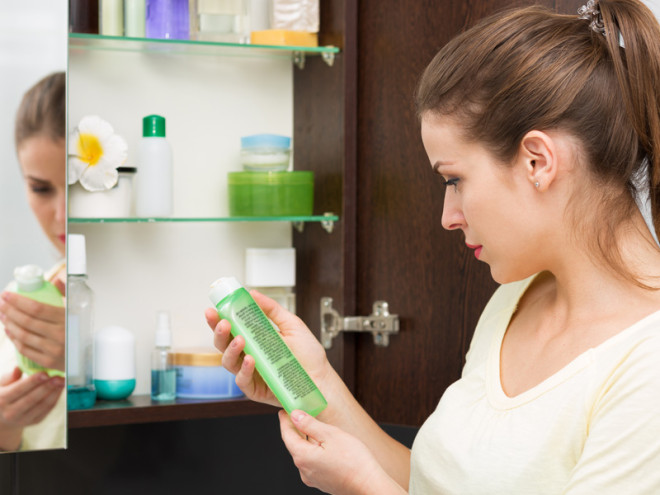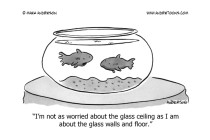Microbeads, the tiny spherical scrubbers found in many personal care products such as body wash, toothpaste, facial scrubs, and cosmetics are creating mega-problems for our waterways and oceans. These little micro-menaces are usually made of a combination of polyethylene (PE), polypropylene (PP), polyethylene terephthalate (PET), polymethyl methacrylate (PMMA) and/or nylon. While very small—most measure less than 1 mm—microbeads are often used in very large quantities. According to the 5 Gyres Institute, an organization at the forefront of researching plastic pollution, a single product can contain over 300,000 microbeads. To better visualize, consider a 200 millilitre bottle can contain as much as 21 grams of microplastics, or roughly a tenth of its weight.
Consequently, billions of these little plastic beads flow down drains every year and are too tiny and buoyant to be effectively filtered by wastewater treatment facilities. As a result they readily find their way into rivers, lakes and oceans. The petroleum in the plastic actually works like a magnet, attracting environmental pollutants such as DDT, PCBs, flame-retardants, and other industrial chemicals. Microbeads then become toxic, non-biodegradable ‘floaties’ that are often mistaken for food by fish and other aquatic wildlife. Some may eventually find their way into the human food chain.
Research conducted by scientists from the State University of New York (SUNY) at Fredonia and the 5 Gyres Institute examined plastics levels in the Great Lakes and discovered some alarming results. Lake Michigan was found to have an average of 17,000 microbeads per square kilometer. Levels were the lowest in Lake Huron and Lake Superior, but Lake Ontario’s levels were a disturbing 1.1 million plastic particles per square kilometer. Researchers also found plastic in the stomachs of some Great Lake fish species. They concluded that microbeads, which are roughly the same size as many fish eggs, are being mistaken for food by animals like yellow perch, turtles, and seagulls. Once consumed, microbeads can block the animals’ digestive systems. The results underscored the importance of securing legislation to ban microbeads from products. Many countries are currently working with manufacturers to phase out the use of microbeads.
In July of this year, Minister of Labour and Status of Women Kellie Leitch announced the Canadian government’s intention to ban microbeads. According to Leitch, the first step is adding microbeads to Canada’s List of Toxic Substances, which will allow more stringent regulation under the Canadian Environmental Protection Act. Specifically, the government intends to develop regulations that will prohibit the manufacture, import and sale of microbead-containing products. While certainly an important step in the right direction, it may be years before these products are gone from store shelves entirely. In the meantime, here are some tips to help keep our waters microbead-free.
What can you do?
- Check the product label. If it contains polyethylene and/or polypropylene, don’t buy it.
- Download the Beat the Microbead app. This app is a combined effort between the North Sea Foundation, the Plastic Soup Foundation, as well as UNEP and Fauna & Flora International. The app helps you determine which products contain microbeads. By scanning a product’s barcode, the app will give you a colour-coded result. Red means the product contains microbeads; orange means it does contain microbeads, but the manufacturer has committed to replacing them at some point in time; and green means the product is microbead-free.
- Look for products with natural exfoliating alternatives such as salt, sugar, apricot shells, ground almonds, pumice, or oatmeal.
- Follow up and ensure the government makes good on its promise.
- Spread the word. We are all in this together, so the best option is an international ban. Lend your support and encouragement to other countries that are working towards banning microbeads as well.
Microbeads are an example of how easy it can be for something tiny, and seemingly innocuous, to have a big, negative impact. Having said that, it’s also an illustrative example of how making small changes in our choices can result in a large-scale, positive benefit. Choosing to live microbead-free is a big step in the right direction towards protecting our waterways from plastics pollution.
About The Author

-
Serial Entrepreneur, Technologist and Inventor.
My objective is to develop useful products that have a net positive effect in the lives of those that use them and the environment that we live in.
CEO of Mission LED Lighting Company Ltd.
- 2017.05.24LED factsWhy Are Cars Switching to LEDs if They’re Too Bright?
- 2017.05.09Be green & saveHow to Easily Replace T8 Fluorescent Tubes With LED
- 2017.03.07Build a better future7 Things About Explosion Proof LED Lighting You Should Know
- 2017.02.28Be green & saveWhy We Love LED Grow Lights (And You Should, Too!)





1 Comment